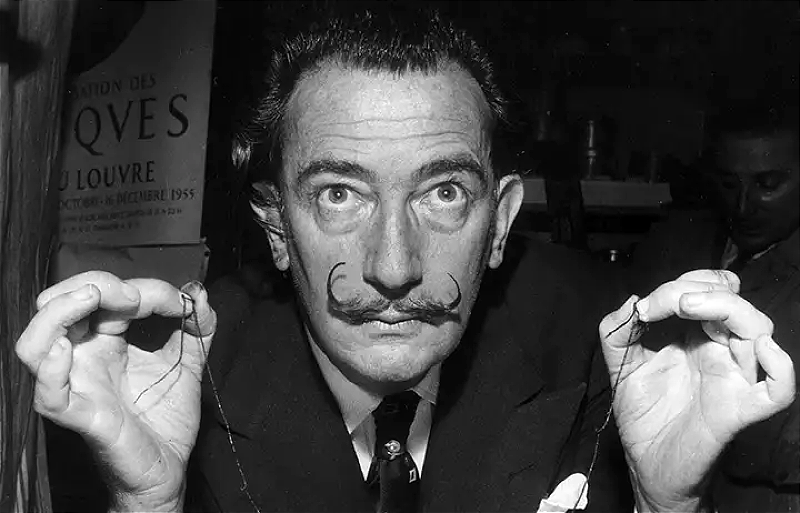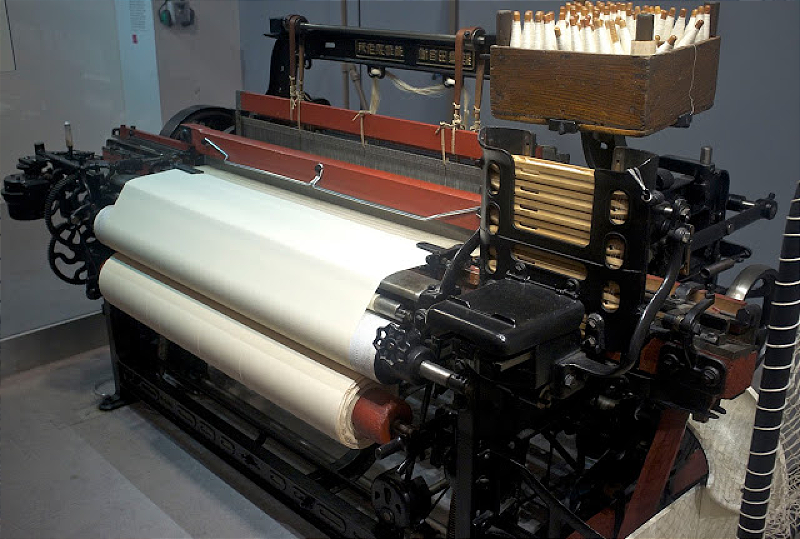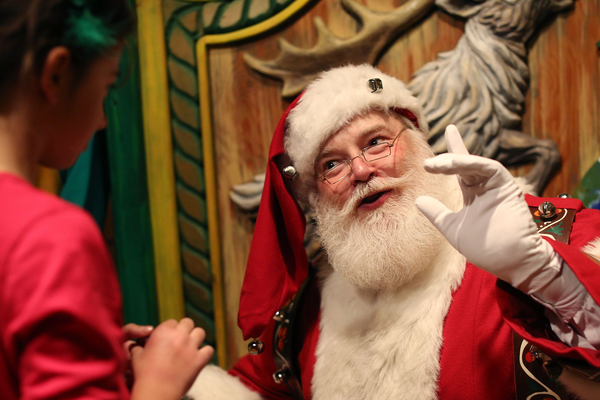Salvador Dali sold a blade of grass to Yoko Ono for $10,000

Japanese singer-songwriter Yoko Ono had an obsession with artist Salvador Dalí’s surrealism, and decided she wanted to buy a strand of hair from Dalí’s famous mustache. Ono offered to pay the artist $10,000, which is the equivalent of about five or ten times that in today’s dollars. But while Dalí was happy to take Ono’s money, he wasn’t so keen on sending her anything so intimate. According to reports, he was worried Ono was a witch and thought that she might use it for occult purposes. So instead of sending her a hair, he sent his partner to the garden to find a dry blade of grass, and sent it off in a pretty box. It was exactly the kind of stunt you’d expect from Dalí, who thrived on blurring the line between art, myth, and mischief. What’s more surreal than getting a counterfeit piece of mustache hair from Salvador Dalí? (via Now I Know)
Our brains remember stories differently depending on how they are told

In a new brain scan study, neuroscientists found that telling the same story different ways activates different memory mechanisms in the listener’s brain, shaping how someone remembers what you told them. The results don’t suggest that either form of storytelling—conceptual or perceptual—is necessarily easier to remember than the other; participants in the new study recalled the stories told in these two ways roughly equally. But the findings do show that different storytelling techniques can change how that information is stored and retrieved, perhaps explaining why some people are better at recalling stories with certain types of information compared to others. Memories aren’t stored in one place in the brain. Instead memory traces are distributed throughout the brain’s outer layers. These networks connect to a deep-brain structure called the hippocampus, which helps form and retrieve memories. (via Scientific American)
Magnolias are so ancient that they are pollinated by beetles because bees didn't exist yet

The enormous pink and white blooms of magnolias unfurl in many parts of the world, but if you look closely at them, you might see a beetle land on the flowers — not a bee. Magnolias have been relying on beetles like this for over 100 million years. Long before the first bees buzzed through a meadow, magnolias struck a deal with these clumsy, chewing pollinators. Beetles are also pollinators of other ancient plants, including water lilies and spicebush, one of the earliest plant-insect relationships. That deal shaped magnolias into the flowers we see today — large, waxy, fragrant, and tough enough to survive the beetles’ messy feeding habits. Magnolias belong to one of the oldest lineages of flowering plants. Their ancestors emerged over 100 million years ago, when dinosaurs still roamed the Earth. At that time, bees and butterflies had yet to evolve, and the first flowers were still figuring out how to reproduce. (via ZME Science)
Hi everyone! Mathew Ingram here. I am able to continue writing this newsletter in part because of your financial help and support, which you can do either through my Patreon or by upgrading your subscription to a monthly contribution. I enjoy gathering all of these links and sharing them with you, but it does take time, and your support makes it possible for me to do that. I also write a weekly newsletter of technology analysis called The Torment Nexus.
A waitress talked about her desire to go to college so an anonymous patron left a $1,000 tip

Alesha Palmer, 18, was working at Vetoni's Italian Restaurant in Gun Barrel City, Texas when she said she began talking about her college plans with a couple seated at one of her tables. Unbeknownst to Palmer, a man dining alone at the table next to the couple would become her anonymous benefactor. When the man went to pay his $9.60 tab, he spoke to the restaurant’s owner and told him he wanted to help Palmer with college. The owner then showed the receipt – which included the $1,000 tip – to Palmer. When the owner showed her the ticket with the $1,000 tip, Palmer froze. Palmer says she normally receives tips in the range of $10 to $20. The largest tip she'd ever received prior to this was a $35 tip on a large birthday party. Palmer, a high school senior, said she plans to attend Tyler Junior College next year and eventually transfer to a culinary arts school and open her own pastry shop. (via ABC News)
The founder of Toyota got his start inventing an automated loom that is still in use today

Toyoda looms are fascinating for many reasons. Not only are they still weaving some of the world's finest denim today, they also mark the birth of Japanese industry. Sakichi Toyoda first developed a power loom around 1897. Automatic means that the loom changes shuttles - the large bobbins which carry the white, yarn for denim - automatically, which allows a single operator to supervise 12 or 20 looms, rather than one or two. The Toyoda G apparently allowed for bobbin change with the loom still running, it was reputedly more reliable and physically compact than its rivals, and included a failsafe mechanism, which meant the operator couldn't insert the bobbin in the wrong configuration. Consequently, it became one of the first Japanese industrial designs to be widely exported, thanks to a partnership with Britain's Pratt Brothers. The profits generated by the Model G helped finance the development of a motor car, and the creation of what we know today as the Toyota industrial corporation. (via Loom State)
When you meet a Transformer in real life

Acknowledgements: I find a lot of these links myself, but I also get some from other newsletters that I rely on as "serendipity engines," such as The Morning News from Rosecrans Baldwin and Andrew Womack, Jodi Ettenberg's Curious About Everything, Dan Lewis's Now I Know, Robert Cottrell and Caroline Crampton's The Browser, Clive Thompson's Linkfest, Noah Brier and Colin Nagy's Why Is This Interesting, Maria Popova's The Marginalian, Sheehan Quirke AKA The Cultural Tutor, the Smithsonian magazine, and JSTOR Daily. If you come across something interesting that you think should be included here, please feel free to email me at mathew @ mathewingram dot com



